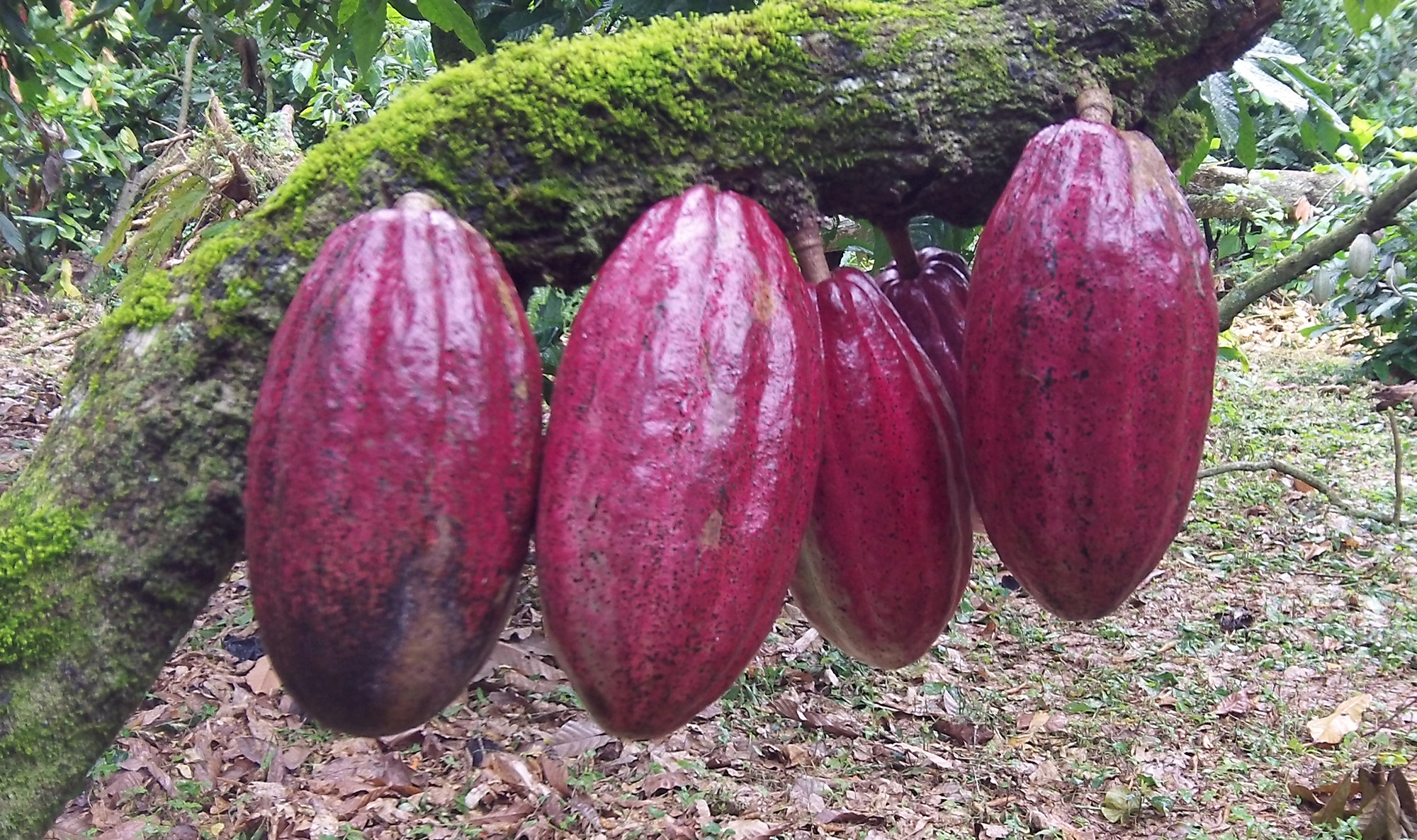
Cacao Agroforestry in the Dominican Republic
Jono Neiger
In October I visited the Dominican Republic as part of Partners of the Americas Farmer to Farmer Program, to assist with cacao agroforestry planning and site design. Farmer and community organizer, Altair Rodriguez hosted me for two weeks at Finca Tierra Negra, her cacao farm in the Dominican Republic’s Central Valley. After years of decline, the farm is in a renewal phase, with goals to renovate its aging cacao operation through development of a diversified agroforestry utilizing syntropic farming principles.
I first visited Finca Tierra Negra in 2017, while on a trip to support the EDGE breadfruit project in Haiti. My colleague Zach Mermel was working at the farm and invited me to visit and discuss the challenges and opportunities of the land. From that initial introduction, a collaboration has grown that encompasses several projects. The hope is that these efforts will diversify the ecological and economic resilience of the farm while providing stable employment for local workers.
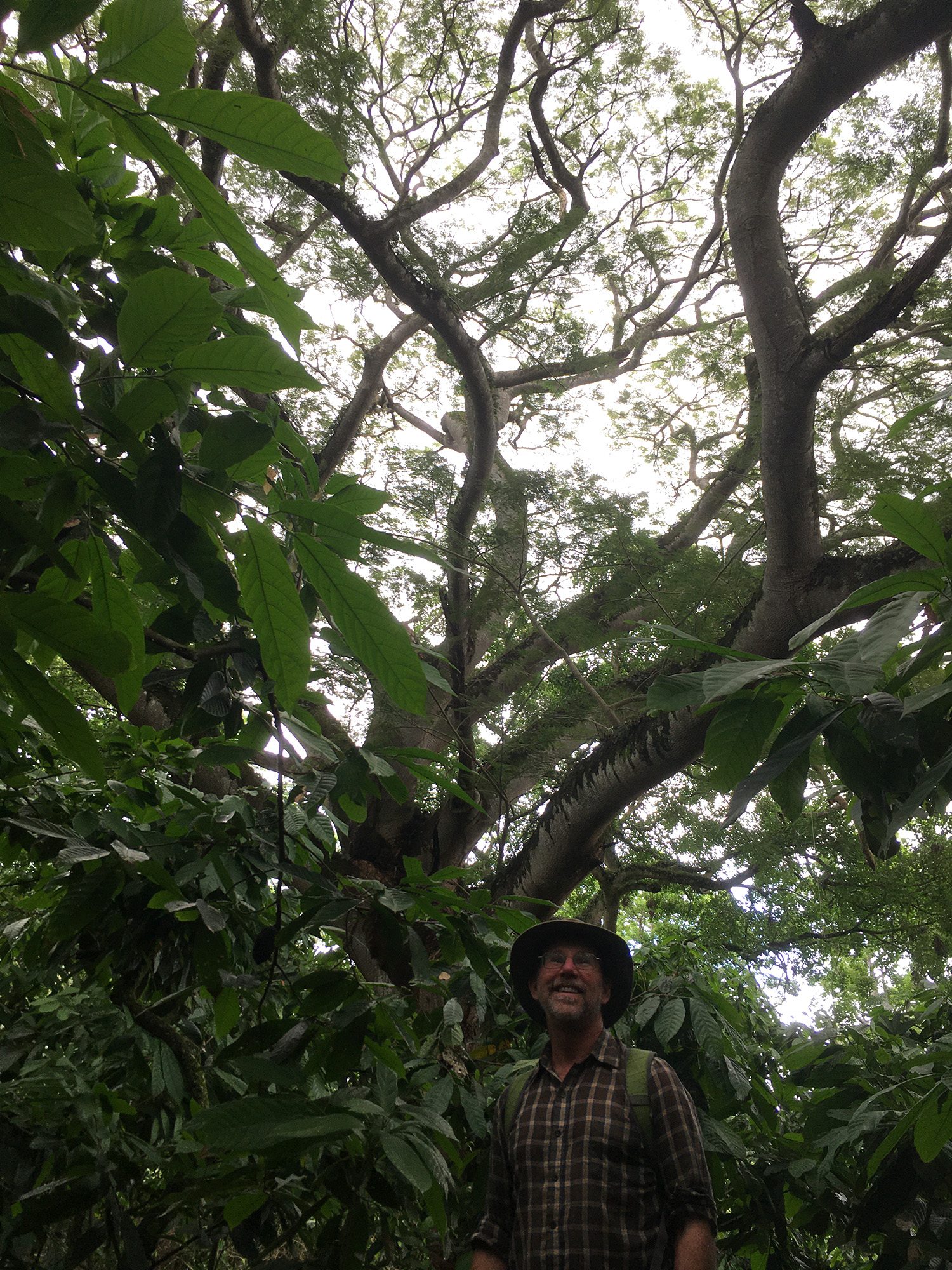
The Farm
Finca Tierra Negra is so named because of the land’s rich, dark soil. Purchased by Altair’s great-grandfather in 1907, the land was taken by the government in the 1940’s, under the Trujillo dictatorship. After Trujillo was assassinated in 1961, the farm was returned to the family. Since that time, much of the country’s cacao production has moved to more mountainous areas of the country, and Finca Tierra Negra has struggled to maintain a viable cacao farm. Many of the original cacao trees are past their prime production years (although cacao trees can be very long-lived, their production wanes after 25 years). Although newer varieties have been planted, relying on cacao alone – particularly when climate predictions for this region lean hotter and drier – would further risk the farm’s viability.
Nurturing a Forest
In the wild, cacao (Theobroma cacao) grows as an understory tree in tropical forests – and cacao agroforestry can be found throughout Latin America, Africa, and Asia. Still, monoculture plantations dominate the global cocoa industry. Initiatives like Cacao Forest and others are working to shift the industry towards agroforestry practices that restore and build ecological and community resilience.
Growing cacao as part of a multi-strata agroforestry has the potential to bring multiple benefits to the farm. In the last few years, thousands of new cacao plants and additional canopy trees of American mahogany (Swietenia mahagoni), Spanish cedar (Cedrela odorata), and beechwood (Gmelina arborea) have been planted at Finca Tierra. Altair has been mapping the current layout and marking opportunities to plug in other crops like avocado, citrus, plantain, breadfruit (Artocarpus altilis), and guanábana (Annona muricata). One goal of this diversity is to increase the economic viability of the farm by bringing in crop income over a longer season and to different markets. The ambitious target of this work is to increase the gross income of the farm by a factor of ten, from $500 per hectare to $5,000.
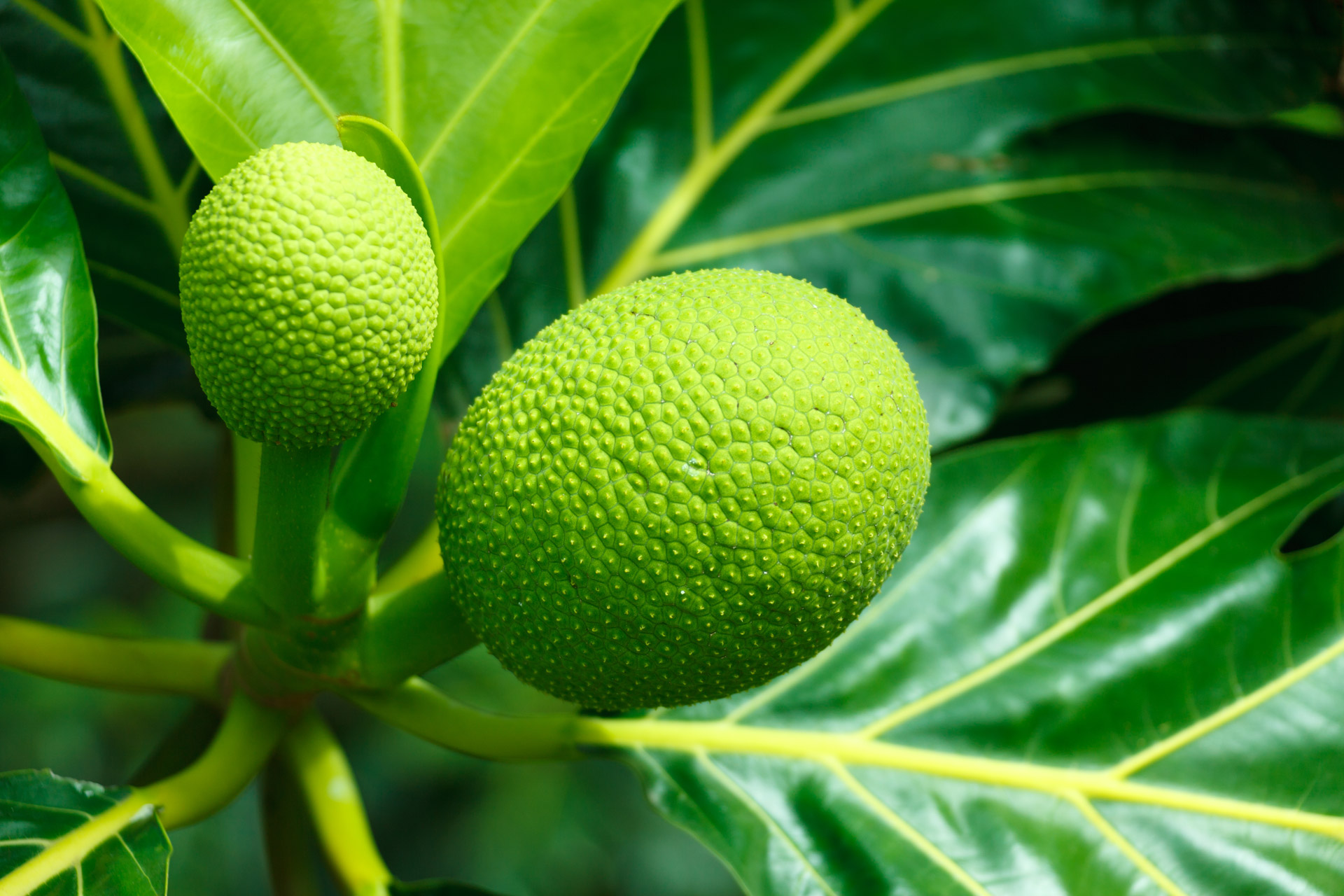
Although long-term climate trends suggest this region will become drier overall, seasonal storms are increasing in frequency and intensity. Maintaining adequate drainage throughout the farm, which doesn’t have the advantage of varied topography to catch and direct water, is challenging. Too much water pooling around new trees can compromise their growth and survival. But during the dry season and drought conditions, there is a need to hold water on the landscape.
Part of our work on this trip was to update a topo map for the next phases of planning, with an emphasis on documenting the current water collection and distribution system in the farm center. Water collected from building gutters is directed to tanks and finally sinks, showers, and farm spigots. Next steps will be to assess water sources and additional collection tanks and infiltration basins for greywater.
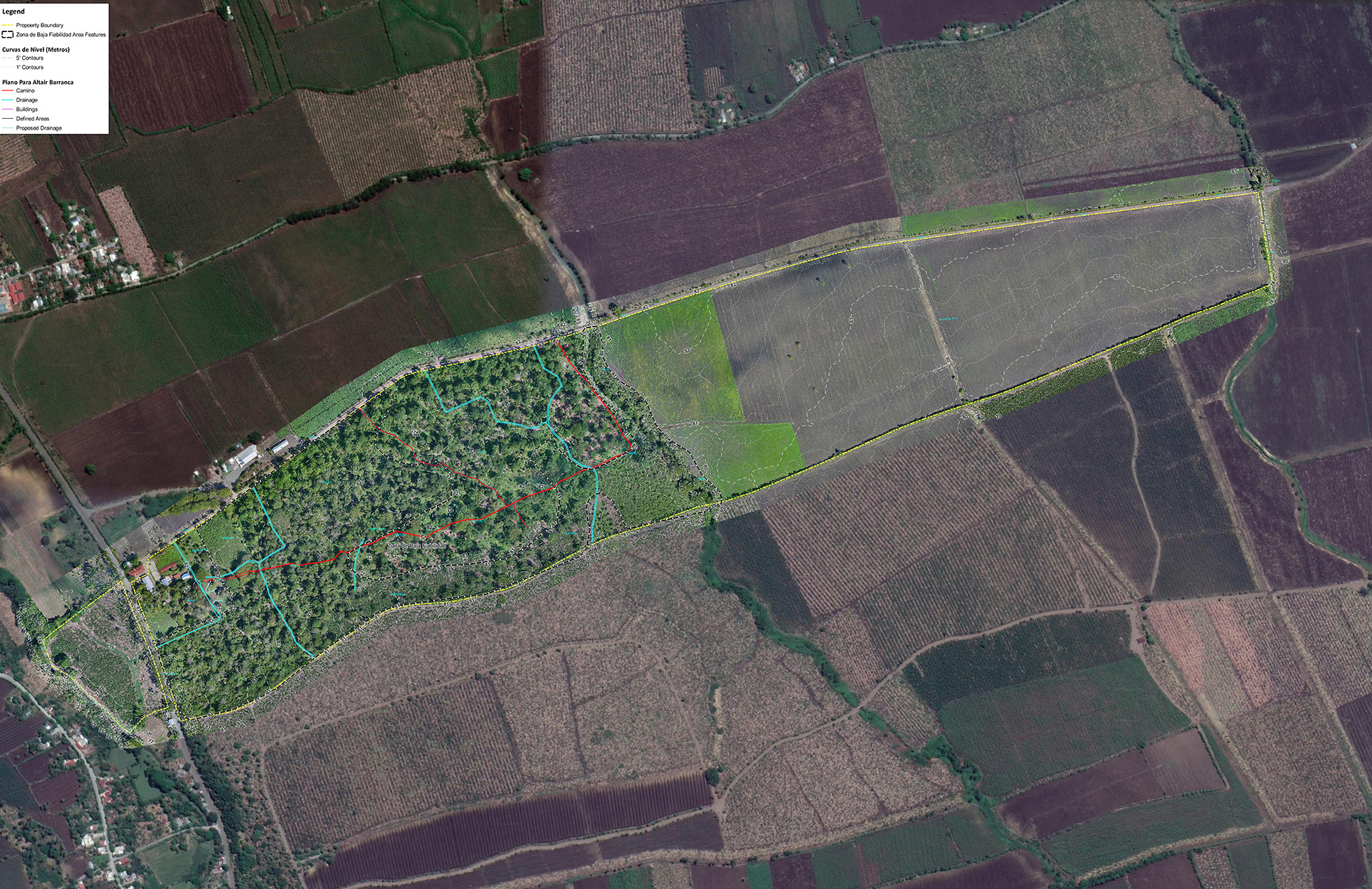
During field time we also surveyed a portion of the farm center area and outlined a pond and drainage system for a syntropic agriculture pilot. Syntropic Agriculture is an agroforestry methodology developed in Brazil by Swiss farmer Ernst Gotsch, wherein ecological succession is deliberately and thoughtfully managed. In our pilot, plants representing all stages of succession will be installed at once, including the final agroforestry.
Field Trips
We had the good fortune to explore the larger context in which Finca Tierra Negra is situated. During week two, we visited Altamira, home to the Juan Cruz de Guaranal cacao association. The farmers here are working with Altair through a Clif Bar & Company pilot project, which aims to implement farming practices that increase sustainability, yields, and farmer income.
Also, as part of the Farmer to Farmer exchange, Zach Mermel organized and presented a mushroom cultivation workshop at Aventura Rincón Eco-lodge in Samana. The workshop focused on propagation of oyster, reishi, and shiitake; it was well attended and there was excitement to begin growing edible and medicinal mushrooms in various parts of the country.
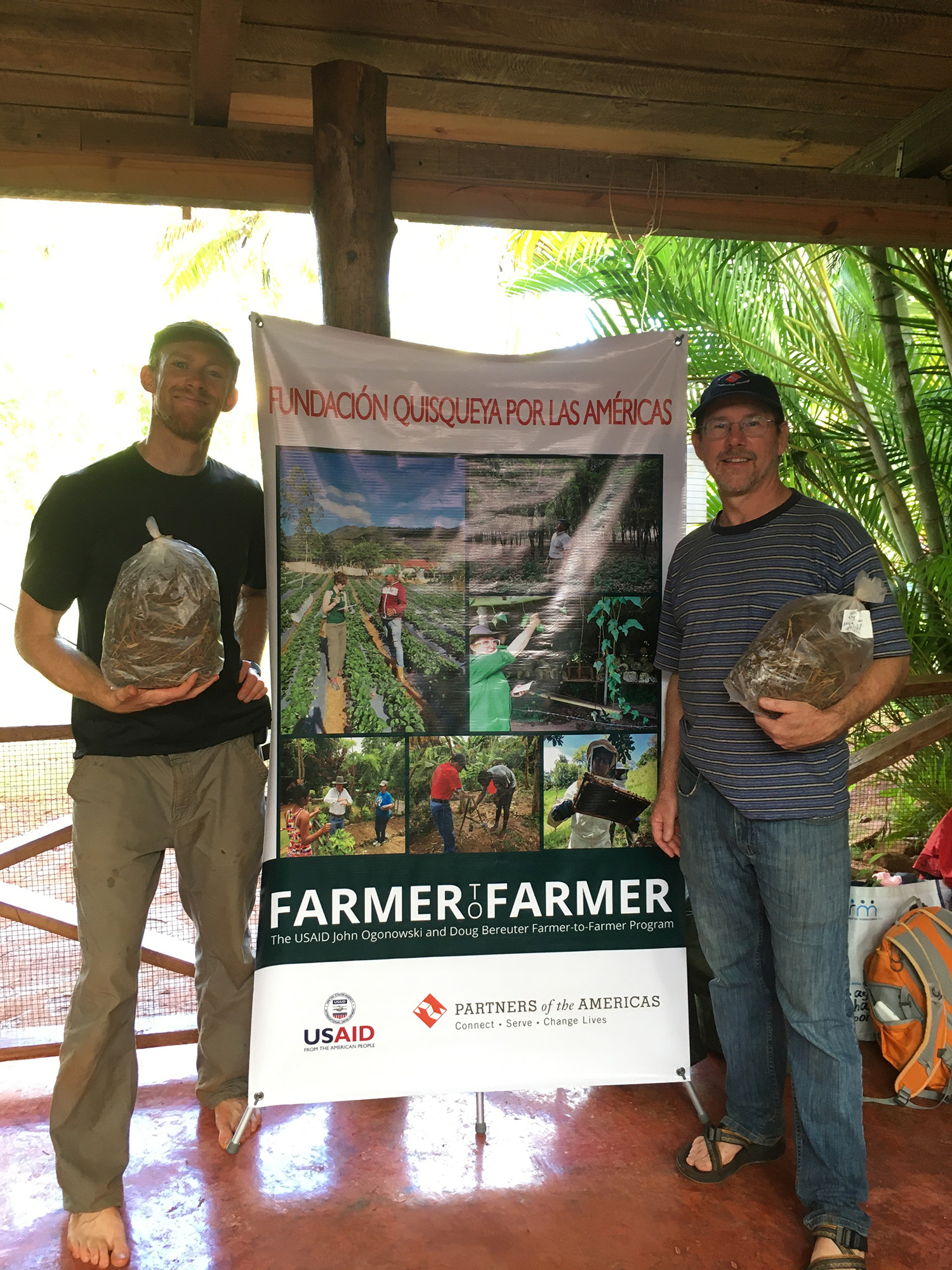
Overall, it was a fun and productive trip. Stay tuned for more reports from the DR and other agroforestry projects over the next year.
– Jono Neiger
*For agroforestry or other regenerative agriculture inquiries, feel free to contact me: jono@regenerativedesigngroup.com

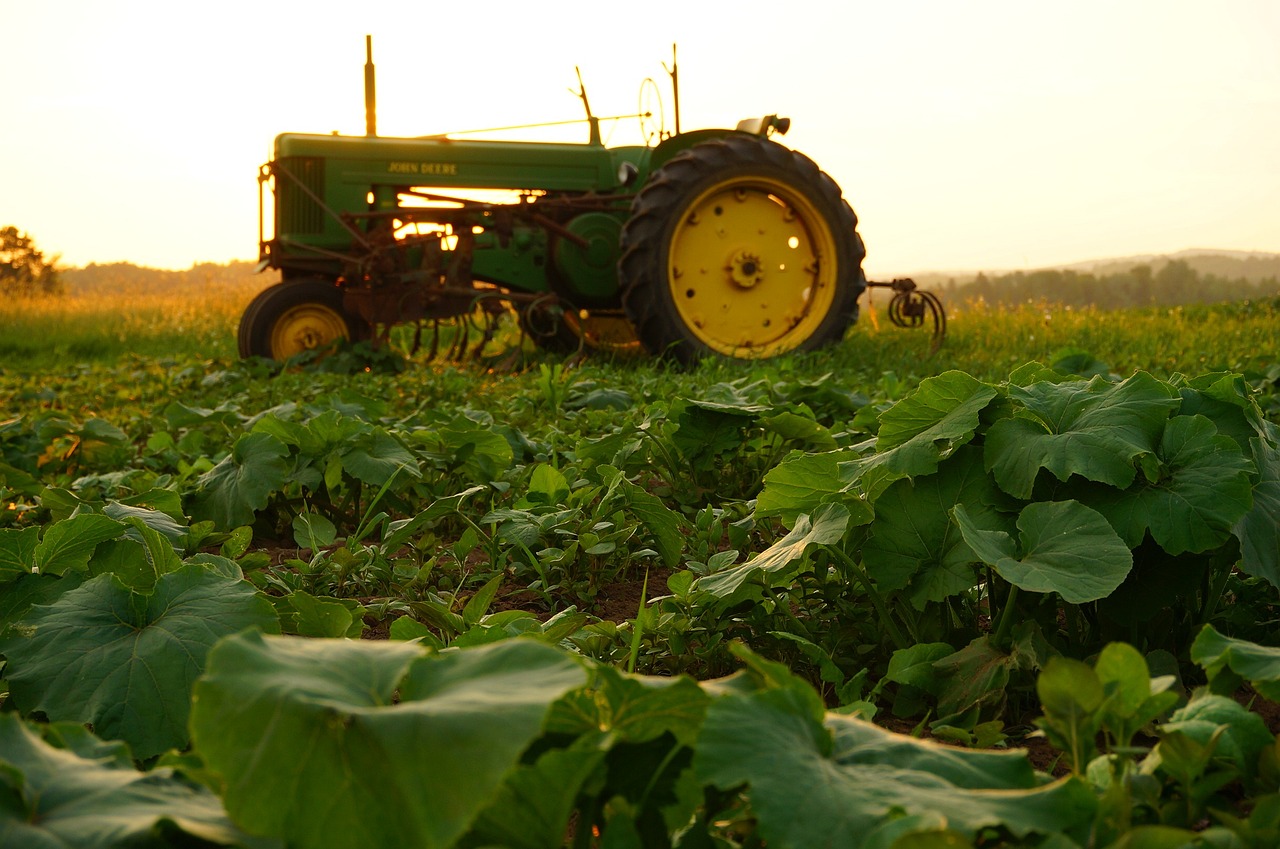
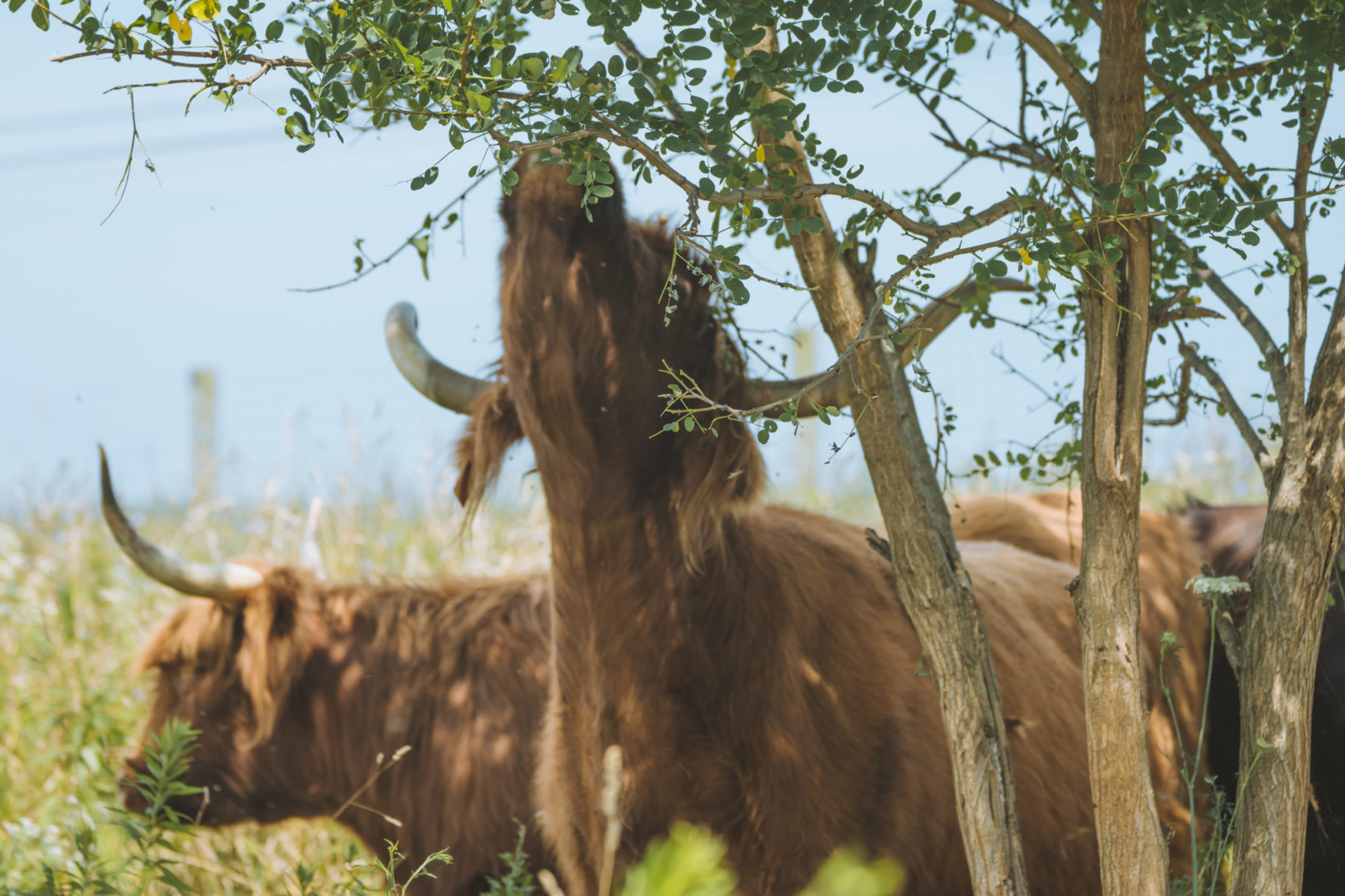
Comments (0)